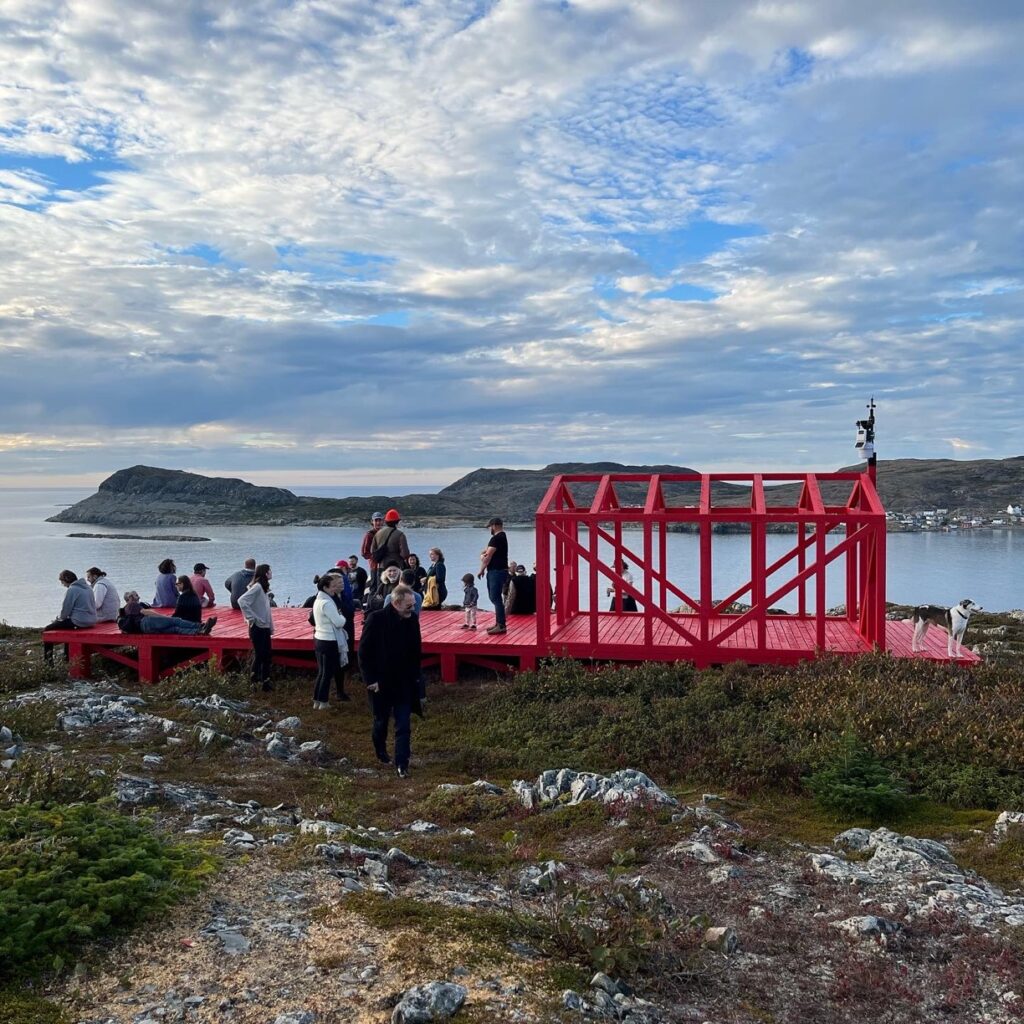
Titled, A Variability Quantifier, 2022, and known colloquially as The Fogo Island Red Weather Station, Gillick’s artwork forms part of a larger collaborative project that unites 28 art organizations around the world through the World Weather Network (WWN). The constellation of geographically-diverse ‘weather stations’ are responding to the climate crisis through the eyes of artists, writers, and communities by sharing observations, stories, reflections and images about their local weather, creating an archipelago of voices and viewpoints. Spanning Nigeria to Iceland to New York, the coalition is bringing increased attention to the importance of artists and writers to the dialogue around climate change.

Listen to Liam Gillick on CBC’s the Q talking about art, Fogo Island, and a weather station to the global climate crisis
Designed with advice from the Fogo Island community, Gillick’s weather station takes its structural cues from traditional outport fishing stages found throughout Newfoundland and Labrador. The structure is a framework for scientists and local community members to add meteorological instruments to measure and track local weather and monitor changes connected to an increasing experience of the climate crisis, including changes to the annual passage of icebergs in ‘Iceberg Alley.’ The station will serve as a location for community gathering, creative place-making, education and discussion, as well as a functional weather station.
For Gillick, The Fogo Island Red Weather Station is a continuation of his interest in understanding the origins of climate science and his long-standing appreciation of Fogo Island as a compelling geographic location. For Fogo Islanders, who have a distinct and embodied relationship with weather, this artwork is a reminder of the significant imprint weather has made on the cultural and physical landscape of Fogo Island and the influence it will continue to exert on our evolving modern outport.
The artwork is being acquired by the National Gallery of Canada as part of its National Outreach Initiative in which artworks from the collection are sited and maintained at localities across the country. It will be displayed on the island through to October 2026.
Continue scrolling to read more about weather’s influence on Fogo Island and art’s role in a healthy economy.
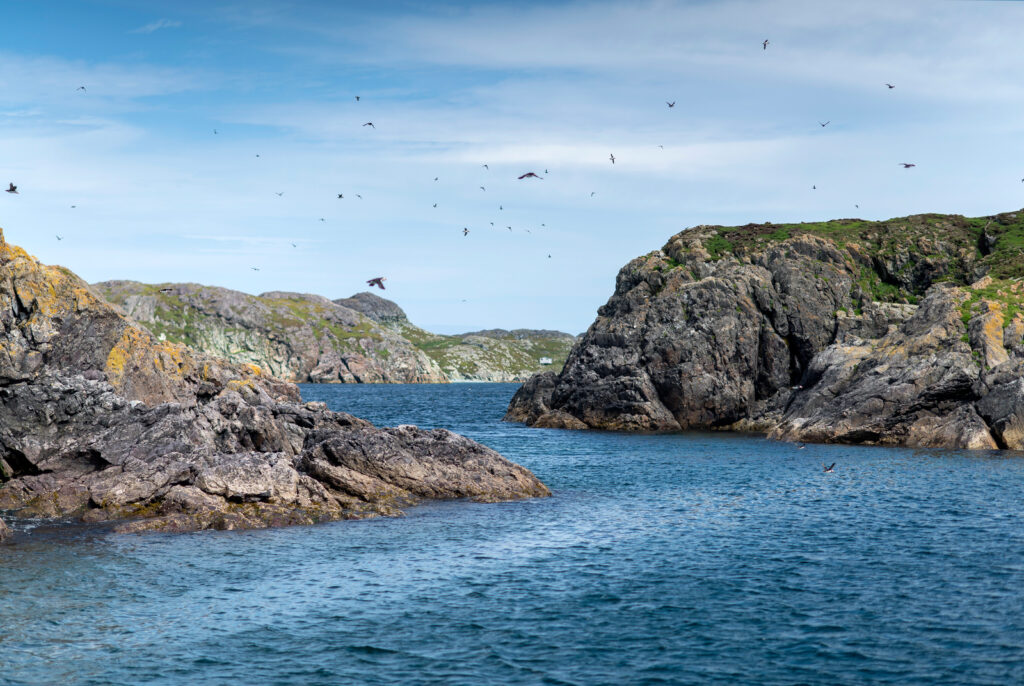
Understanding Life in the Pathway of the Labrador Current
By selecting Fogo Island as one of the 28 locations that will host a weather station, the World Weather Network is considering the variety of climates and topographies that dynamically make up our world and each region’s insights into how weather changes will play a determining role in our shared futures. In many of these singular locations, weather is understood acutely by the communities that live there. This contrasts with more densely populated regions where people generally live in more stable climates and interact with the weather in a much more static sense: by checking the internet for updates.
On Fogo Island our relationship to our distinct environment can be viewed as both a challenge and a joy—the Labrador current is the bearer of moody weather shifts and a prolonged winter, and also the provider of the single greatest asset that continues to define our lives: the sea and its prolific marine life.
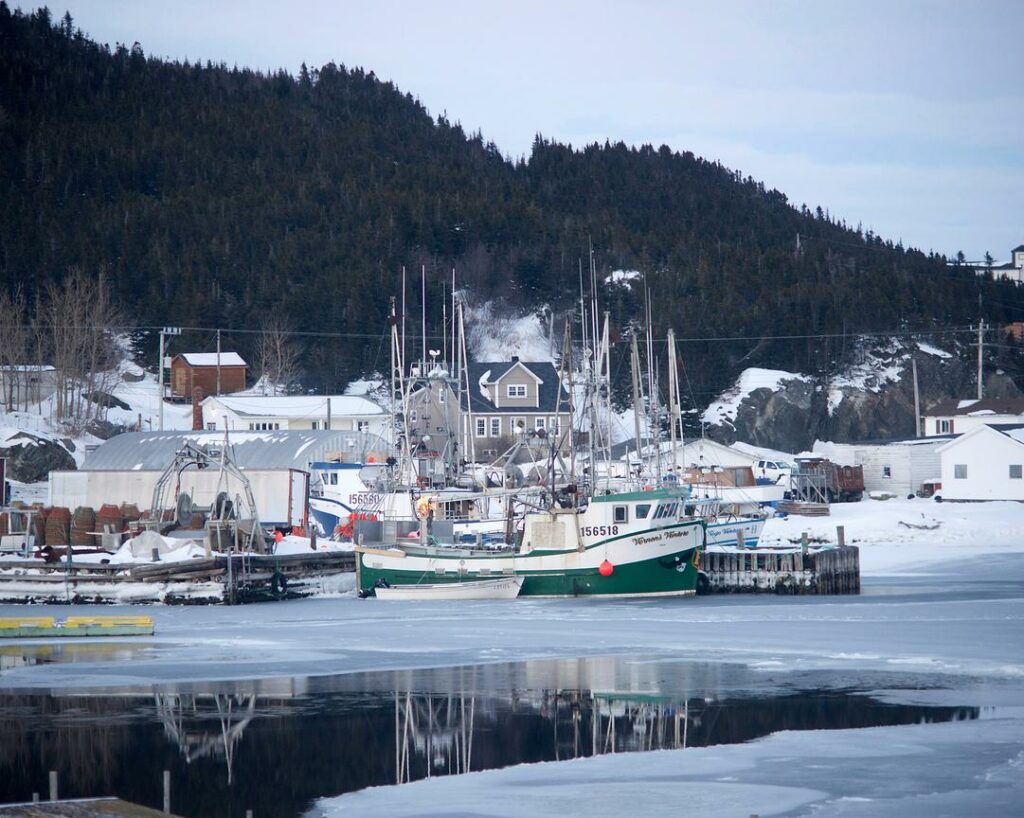
In contrast to the traditional four seasons, we count Seven Seasons that tie into the foundational basis of our fishing economy (it should be noted many Fogo Islanders make the case for even more seasons). A close understanding of the natural environment is necessary when your livelihood is dependent on it. Before the advances of larger fishing boats and weather data, fishers had to learn to read the weather like the back of their hand (and still do) as any trip out into the ocean posed significant risk.
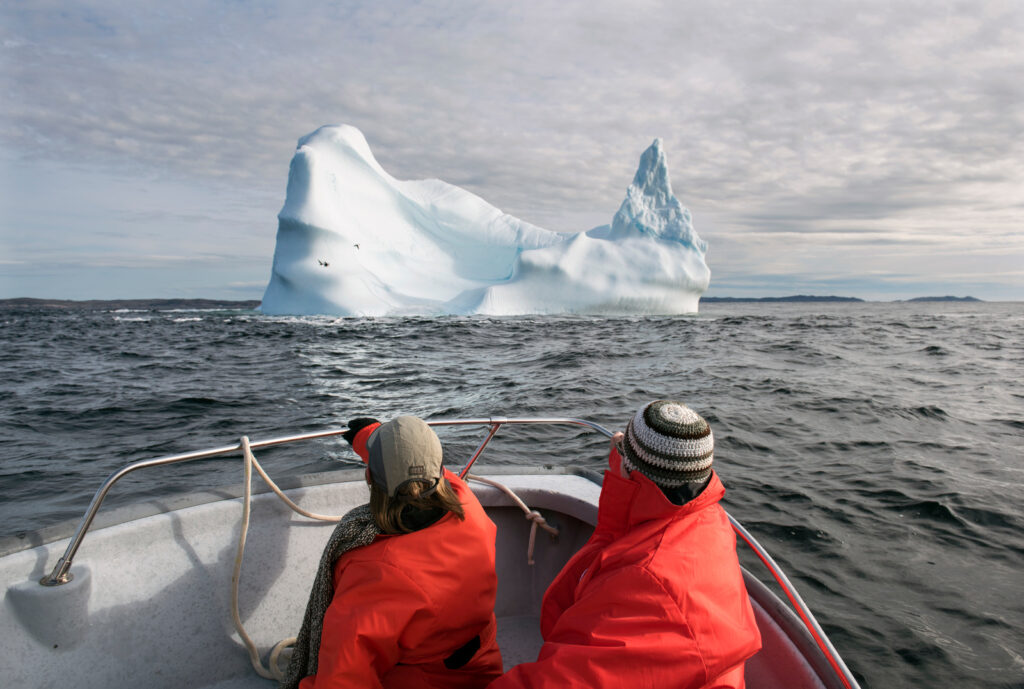
One of the most poignant examples of our first-hand knowledge as it relates to the human-caused changes we are seeing on Fogo Island is illustrated in ‘Iceberg Alley.’ Watching the glacial ice flow that passes by Fogo Island, carried by the swift Labrador Current, is a local pastime and an unofficial marker of the transition to summer. In recent years however, those majestic Icebergs have substantially increased in concentration and flow—a change that Fogo Islanders have experienced in real-time simply by bearing witness to the same stretch of ocean year over year. This kind of qualitative, knowledge-based data is crucial for understanding what is changing in our oceans. It is knowledge that reflects a lived experience of the weather.
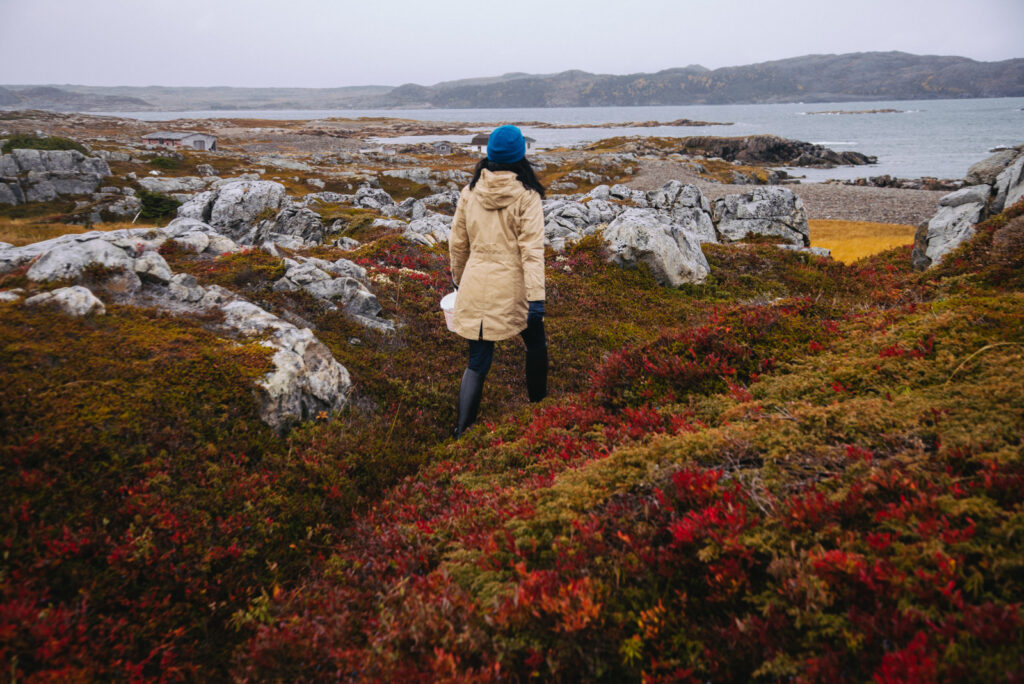
What does art have to do with the weather?
Fogo Island Arts (FIA), Shorefast’s foundational program on Fogo Island, is underpinned by the conviction that individuals are shaped by place—that our knowledge, culture, and capacity to relate to one another depends on the specificity of our surroundings. Creating a healthy, vibrant community economy relies on integrating art and artists into dialogue and partnerships with diverse sectors of the community to broaden our understanding of what is possible.
The Fogo Island Red Weather Station is a reminder of our shared and embodied experience of weather that ties directly to our culture. This open-air exhibit will be a public space to facilitate community gathering and connection through conversations about the weather. For Gillick, this artwork is built around the relevance of intuitive knowledge to our conversations—big and small—that are necessary to address climate change in a meaningful way. A central theme throughout many of his climate-related projects is an interest in understanding “the history of the maths behind climate research, how and why things are measured as they are, and how different cultural traditions of tracking weather can add to our understanding of it.”
In the local context, the Weather Station represents a new era of weather data collection on Fogo Island. Owing to our remote location, Fogo Island currently relies on triangulated data from nearby weather stations to provide a ‘best guess’ on the day’s weather events. Quantitative data collection on Fogo Island will increase our capacity to participate in scientific research as commissioned by the Department of Fisheries and Oceans and the Marine Institute at Memorial University, as well as complementing our community science initiatives, such as ice-tracking, lobster-monitoring, and capelin spawning that are being rolled out under Shorefast’s Environmental Stewardship program.
Knowing that coastal cities and communities are at the forefront of the climate crisis, we are a bellwether for changes being felt globally. Our local knowledge and intimate relationship with the natural environment is a key asset in our adaptive and responsive future.
By looking at the changes to our global weather through the lens of art we are invited to consider what is at stake for all of us.